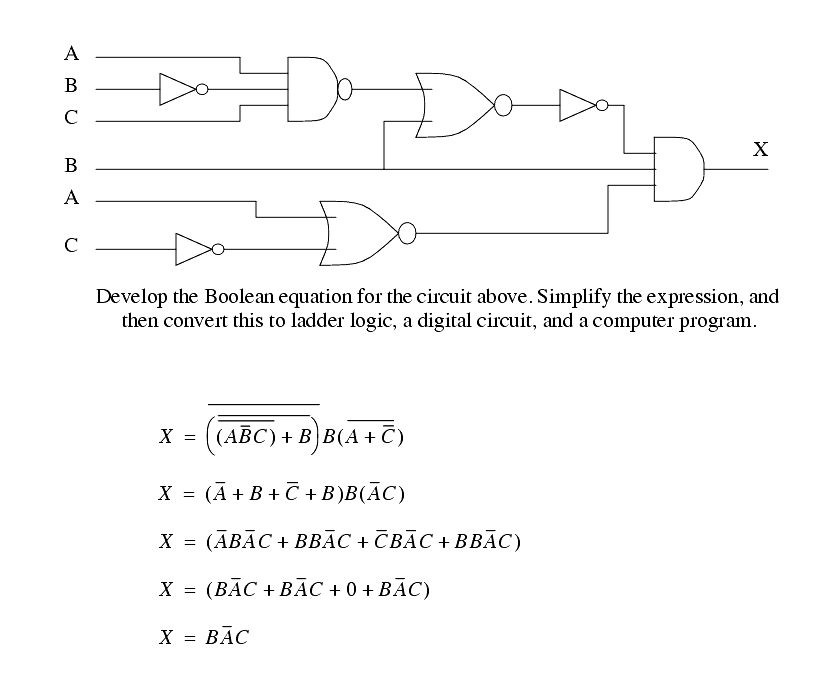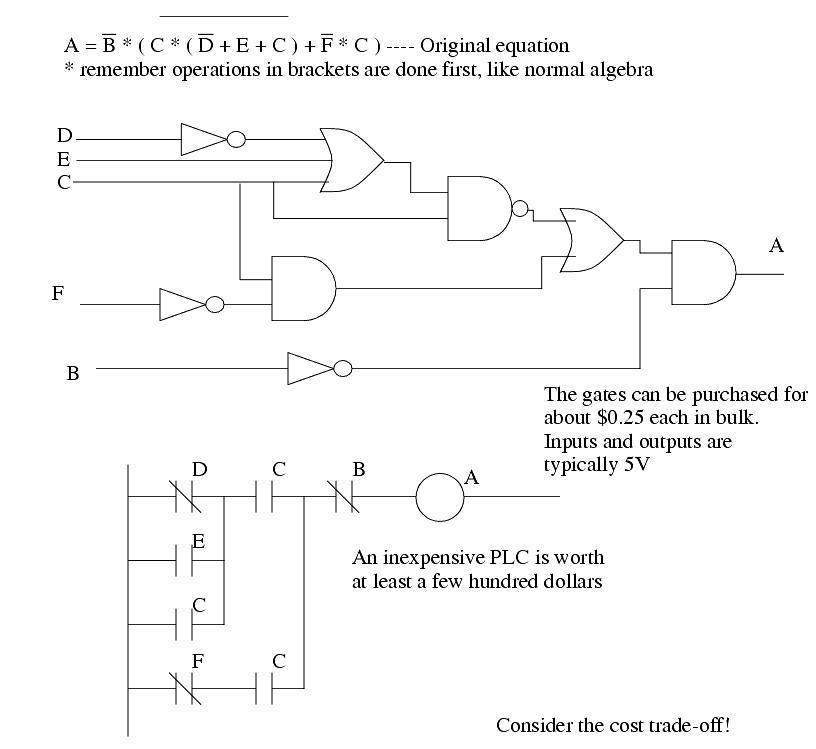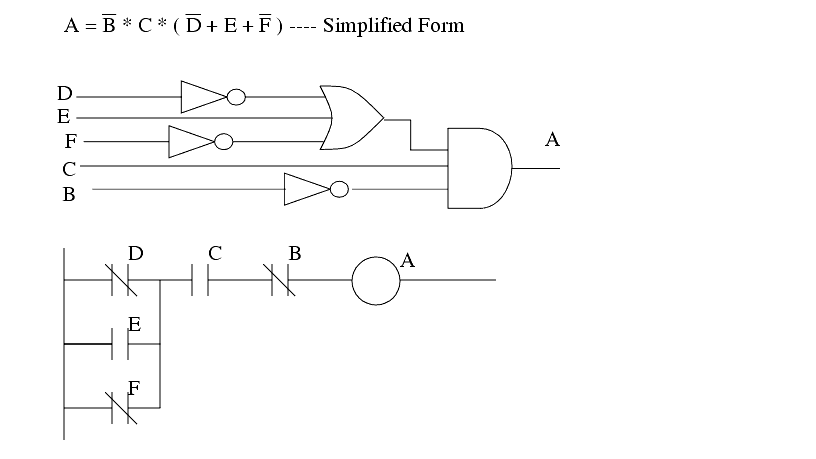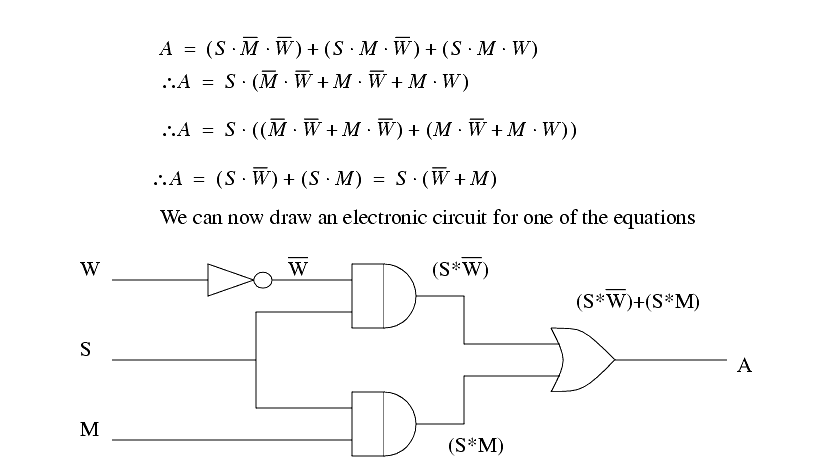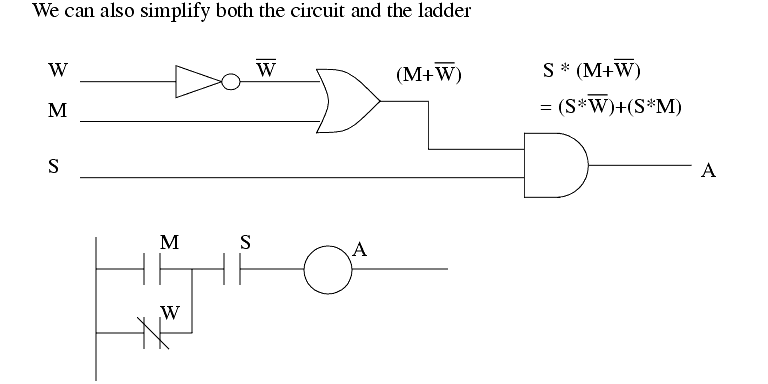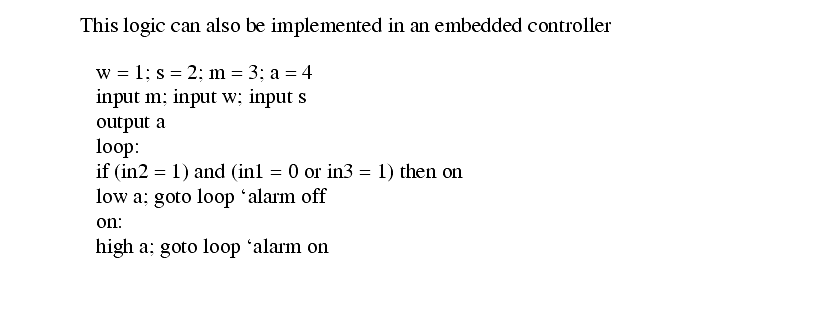20.2 DISCRETE LOGIC
������������
The basic types of discrete logic problems are,
1. Conditional - if a set of conditions can directly cause an action.
e.g. if the temperature is too high and there is an ingot in only one bay, turn on fan 1.
T1 = temperature overheat sensor
in Boolean F1 = T1 * (B1 EOR B2)
or F1 = T1 * (( B1 * B2 ) + ( B2 * B1 ))
or F1 = T1 * B1 * B2 + T1 * B2 * B1
2. Sequential - when the system is in a certain state, the controls will do certain things.
e.g., when an oven is on, the PLC adjusts temperature.When it is off doors can be opened/closed.
Try the example shown below,
Consider the more complicated design that follows,
20.2.1 Boolean Algebra for Circuit and Ladder Logic Design
������������
When we have logical decisions to make, truth tables and Boolean algebra allow formal methods to be used. The use of formal methods improves the overall quality of the design.
Consider the example of a burglar alarm
1. If alarm is on, check sensors.
2. If window/door sensor is broken (turns off), sound alarm and turn on lights
3. If motion sensor goes on (detects thief) sound alarm and turn on lights.
A = Alarm and lights switch (1 = on)
W = Window/Door sensor (1 = OK)
M = Motion Sensor (0 = OK)
S = Alarm Active switch (1 = on)
This example was quite simple. To do more complicated problems we will need to review some basic theory first.
20.2.2 Boolean Forms
������������
Canonical, truth tables



